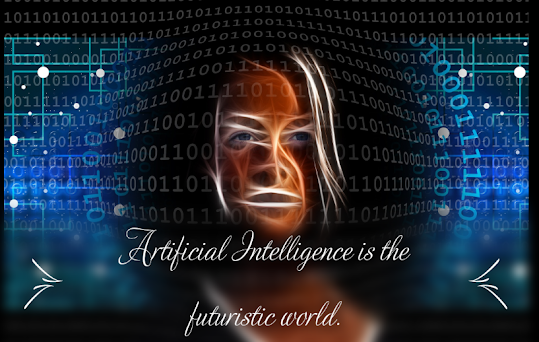What is Artificial Intelligence in simple words?
- Definition of AI
- Types of artificial intelligence
- Difference between Artificial Intelligence, Machine learning, and Deep learning
- History of Artificial Intelligence
- Is Artificial Intelligence use in Hindu Mythology
Definition of AI in simple word
AI is a scientific machine that mimics the behavior of humans. AI is a technique of getting machines to figure and behave like humans.
A few examples of using Artificial Intelligence
- Chatbots solve customer problems faster and provide accurate answers.
- Intelligent assistants analyze critical information from Bigdata sets to improve scheduling.
- Search engines can provide automated recommendations for TV shows, websites, Youtube videos based on user's viewing habits.
When we think of a superpowered epic and analysis the data about any particular format, it is AI. Although AI is a high-functioning image, and robots like humans, it can not replace humans. It helps to significantly enhance the power, capability, and contribution of humans. Now, AI is a valuable asset.
"A failure is an option here. If things are not failing, you are not innovating enough."
Elon Musk.
Artificial Intelligence introduction
Whether AI may be a threat or not is debatable. For now, let me introduce you to AI. The term AI stands for Artificial Intelligence. AI was first introduced by John McCarty at the Dartmouth conference in 1956. He defined AI as a technique of making intelligent machines in a way.
AI has been ready to accomplish this by creating machines and robots. AI is used during a wide selection of fields like healthcare, robotics, marketing business analytics, and lots more. As you know, we do not perceive many AI applications as AI. We frequently tend to think of artificial intelligence as robots doing our daily course. But the reality is AI has found its way into our daily lives. If you think the accurate search result of Google and your interest based on content on Facebook, you will be surprised. Artificial intelligence makes it possible.
AI can be structured along with three evolutionary stages
Three different types of artificial intelligence with simple words are given below.
- Artificial narrow intelligence
- Artificial general intelligence
- Artificial superintelligence
Artificial narrow intelligence
Artificial narrow intelligence is called weak AI. AI has been applied only to single specific tasks extremely well. These operating systems focus on a narrowly defined specific problem as weak AI. Alexa may be an excellent example of narrow intelligence. Another example of weak AI is face verification. you can simply see on your iPhone. The autopilot feature at Tesla, the social humanoid Sophia is made at Hanson robotics, and eventually, Google Maps. All of those applications are supported by weak AI or artificial narrow intelligence.
Artificial general intelligence
Now let's take a glance at artificial general intelligence. Artificial general intelligence is additionally referred to as strong AI. It involves machines that possess the power to perform any intellectual task. As human beings, are you able to see machines don't possess human-like abilities? We have a strong processing unit to perform high-level computations but AI is not yet capable of thinking and reasoning like a human. It is a doubt of many experts that artificial general intelligence will ever be possible or not.
Artificial super-intelligence
Artificial superintelligence (ASI) is a system of software. ASI is an intellectual power over humans across a comprehensive range of categories. Artificial superintelligence (ASI) is a system of software. ASI is an intellectual power over humans across a comprehensive range of categories. Humans can not compete with artificial superintelligence, because they are limited by slow biological evolution. This is often a term that refers to the time when the capabilities of computers will surpass the citizenry. Now it is seen Artificial superintelligence as a hypothetical situation. You always see in movies and science-fiction books, machines take over the planet.
Difference between Artificial Intelligence, Machine learning, and Deep learning
Know the difference between Artificial Intelligence, ML, DL in simple words., Now before I'm going any longer, let me clear a common misconception. People often tend to think that AI, machine learning, and deep learning are equivalent. Since they need common applications for instance. Machine-learning is a subset of AI that focuses on getting machines to form decisions by feeding them data. On the opposite hand, deep learning is a subset of machine learning. It uses the concept of neural networks to solve complex problems. AI, machine learning, and deep learning are interconnected fields. Machine learning and deep learning needs AI by providing a group of algorithms and neural networks to solve data-driven problems. However, AI isn't restricted to only machine learning and deep learning. It covers many fields, including tongue processing, object detection, computer vision, and robotics expert systems.
History of Artificial Intelligence
- Fish Incarnation (Matsyavatar)
- Turtle Incarnation (Kachhap/Kurma avatar)
- Boar Incarnation(Varahavatar)
- Man-lion Incarnation(Narasingavatar)
- Dwarf-god Incarnation (Vamanavatar)
- Parsuram Incarnation (Parsuramavatar)
- Rama Incarnation (Ramavatar)
- Krishna Incarnation (Krishnavatar)
Above all Incarnation of God, you will find the super-human activities are unbelievable. If you imagine with artificial Intelligence you get the concept of advanced technology is used to fulfill the objective of the incarnation successfully. To know more about the Incarnation of God and analysis, see the article "Artificial Intelligence in Hindu mythology".






0 Comments